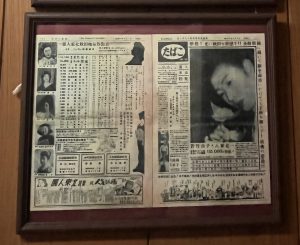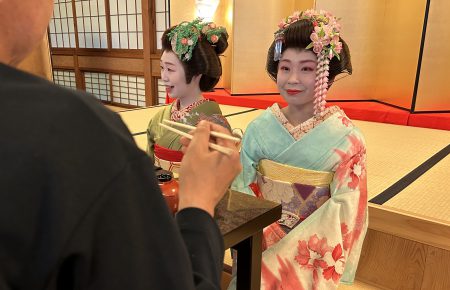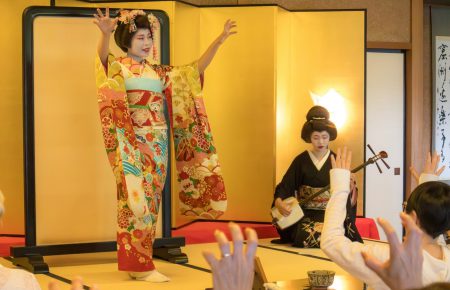当館フォトギャラリーのお写真は、
昭和3年に創業した「岩田写真館様」よりお借りし展示しています。
現在と昔の秋田市の風景を比べながらお楽しみください。
The photos in our gallery are on loan from Iwata Photo Studio, which was established in 1928.
Please enjoy comparing the present and the past scenery of Akita City.
秋田駅前の風景
A scenery of Akita station area
秋田駅周辺の写真には、地方から電車を乗り継いで来た多くの行商の人々が映っています。
現在「仲小路商店街」がある辺りは、昔「金座街」と呼ばれていました。
また、 秋田銘菓としてとても有名な「金萬」の名前は、
金座街で食堂を営まれていた先代の大内正見氏が、ご自身の店先でおまんじゅうを出したことが由来と伝えられています。
Photographs of the Akita Station area show many peddlers who came from the countryside by train.
The area where “Nakakoji Shopping Street” is now located used to be called “Kinza-gai.
The name of the famous Akita confectionery, “Kinman,” was also derived from the name of a diner on Kinza-gai,
The name “Kinman” was given by Masami Ouchi, who ran a diner in Kinza-gai.
The name “Kinman” is said to have originated from his predecessor, Masami Ouchi, who ran a diner on Kinza-gai and served manju(sweet bun) at his storefront.
繁華街・川反 Downtown Kawabata
また、最も川反芸者が栄えたのは昭和30年(1935年)頃と言われています。
特に昭和26年に発行された「たばこ新聞」にご注目ください。
ご覧の通り、当時はたばこ1箱に投票券が1枚付き、芸者の人気投票が行われていました。
記事によると、この回の「麗人東北人気投票」で1位を獲得したのは川反芸者の若竹市子(いちこ)お姐さんでした。
現代のアイドルの総選挙を彷彿とさせます。
It is also said that the most prosperous period for Kawan geisha was around 1935.
Please pay attention to the “Tobacco Newspaper” published in 1951.
At that time, a box of cigarettes came with a voting ticket of popularity contest for geisha was held.
According to the article, the winner of the “Reijin Tohoku Popularity Poll” this time was Miss. Ichiko Wakatake (Kawabata-Geisha), who won first place. This is reminiscent of a general election for modern idols.
川反花柳界の歴史 History of Kawabata Karyukai
秋田婦人運動の先駆者・和崎ハル氏が大正13年に「芸妓学校」を開設しました。
毎週日曜日に約50人の芸妓があらゆる勉学に親しみ、器量の良さ、踊りや唄にもに磨きをかけたそうです。
明治末、大正から昭和にかけて栄華を誇った歓楽街・川反は、全国にも名を馳せました。
最盛期には200名ほどいた川反芸者も、現在ではごく数名となりましたが、
2014年よりあきた舞妓・あきた芸者が秋田川反ならではの文化の継承と発展を志し、精進しています。
Haru Wasaki, a pioneer of the Akita Women’s Movement, established the “Geigi School” in 1924.
Every Sunday, about 50 geisha studied hard and honed their skills in dancing and singing.
Kawabata, the entertainment district that flourished from the end of the Meiji period through the Taisho and Showa period became famous throughout the country.
There were about 200 Kawabata geisha in its heyday, although there are only a few today.
Since 2014, Akita Maiko and Akita Geisha have been working diligently to carry on and develop the unique culture of Akita Kawabata.







